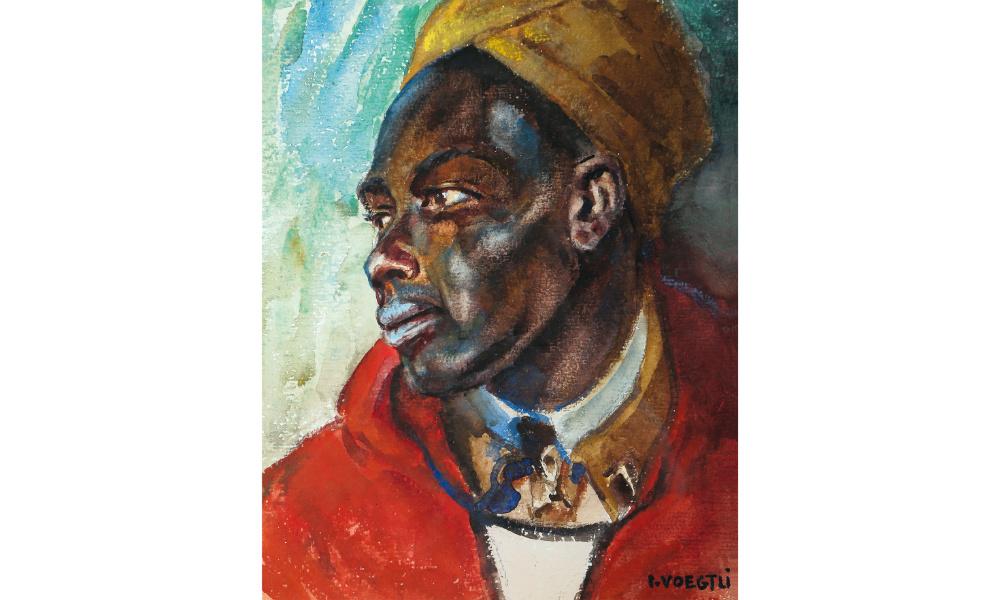From an artistic and social point of view, this painting is undoubtedly a masterpiece by Julius Voegtli. Only very few European artists of his epoch succeeded in creating such a convincing, poignant, and politically impactful portrait of an African soldier. It is a “document of humanity,” an eloquent testimony against racism, colonialism, and war. The face of the Spahi expresses the painful experiences associated with these words. The painting also reflects the painter’s partisanship with Swiss Asylum law, which granted war refugees protection and assistance regardless of the color of their skin during World War I. The image of the “colonial soldier” who fled from France to Switzerland is in profile. He is looking toward the left, allowing the painter to emphasize his distinctive features. The color of the uniform – red, yellow, white, and blue, including various shades – is used as a contrast to accentuate the dark sheen and beauty of the face. Pale blue shades on the forehead, cheeks, nose, and lips underscore the “color” of the portrayed, who by no means appears as “black,” as the colonial look would suggest. Additionally, the blue to turquoise background “lightens” the portrait of the “black man.”
Sources:
Schütt, Peter (2022) “Portrait of a Spahi in Uniform”, in: JULIUS VOEGTLI: A Swiss Impressionist Pioneer, Edited by Nour Nouri & Davood Khazaie, Pashmin Art Publishers, pp.150-151.
Julius Vögtli (1879-1944) was a Swiss painter who played a key role in the development of impressionism in Switzerland. His landscape paintings, which often depicted the Swiss countryside, were characterized by their vibrant colors and expressive brushstrokes. Vögtli’s work helped to establish impressionism as a major artistic movement in Switzerland during the late 19th and early 20th centuries.



